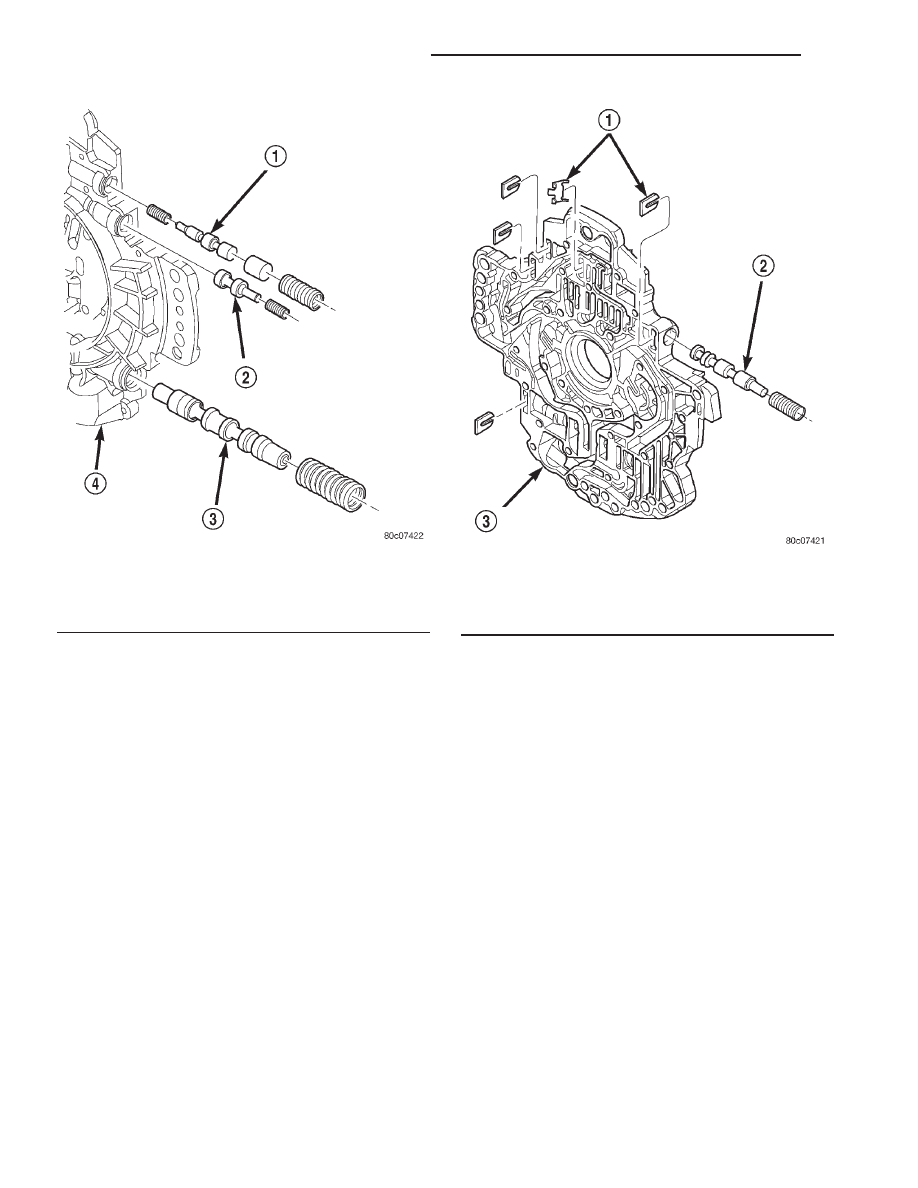Dodge Dakota (R1). Manual - part 717

Inspect the pump bushing. Then check the reaction
shaft support bushing. Replace either bushing only if
heavily worn, scored or damaged. It is not necessary to
replace the bushings unless they are actually damaged.
Inspect the valves and plugs for scratches, burrs,
nicks, or scores. Minor surface scratches on steel valves
and plugs can be removed with crocus cloth but do not
round off the edges of the valve or plug lands.
Maintaining sharpness of these edges is vitally
important. The edges prevent foreign matter from
lodging between the valves and plugs and the bore.
Inspect all the valve and plug bores in the oil pump
cover. Use a penlight to view the bore interiors. Replace
the oil pump if any bores are distorted or scored.
Inspect all of the valve springs. The springs must be
free of distortion, warpage or broken coils.
Trial fit each valve and plug in its bore to check
freedom of operation. When clean and dry, the valves
and plugs should drop freely into the bores.
ASSEMBLY
(1) Clean and inspect all components. Make sure
that all passages are thoroughly cleaned and are free
from dirt or debris. Make sure that all valves move
freely in their proper bore. Make sure that all gear
pockets and bushings are free from excessive wear
and scoring. Replace the oil pump if any excessive
wear or scoring is found.
(2) Coat the gears with Mopar® ATF +4, type
9602, and install into their original locations.
(3) Lubricate the oil pump valves with Mopar®
ATF +4, type 9602, and install the valve, spring and
retainer into the appropriate oil pump valve body
bore (Fig. 91) (Fig. 92).
(4) Place the separator plate onto the oil pump
body (Fig. 90).
(5) Install the screws to hold the separator plate
onto the oil pump body (Fig. 90). Tighten the screws
to 4.5 N·m (40 in.lbs.).
(6) Position the oil pump cover onto the locating
dowels (Fig. 89).
(7) Seat the two oil pump halves together and
install all bolts finger tight.
(8) Torque all bolts down slowly starting in the
center and working outward. The correct torque is
4.5 N·m (40 in.lbs.).
(9) Verify that the oil pump gears rotate freely and
smoothly.
(10) Position the reaction shaft support into the oil
pump (Fig. 89).
Fig. 91 Oil Pump Valve Body
1 - T/C REGULATOR VALVE
2 - T/C LIMIT VALVE
3 - REGULATOR VALVE
4 - OIL PUMP VALVE BODY
Fig. 92 T/C Switch Valve
1 - RETAINER
2 - T/C SWITCH VALVE
3 - OIL PUMP VALVE BODY
21 - 512
AUTOMATIC TRANSMISSION - 45RFE
AN
OIL PUMP (Continued)